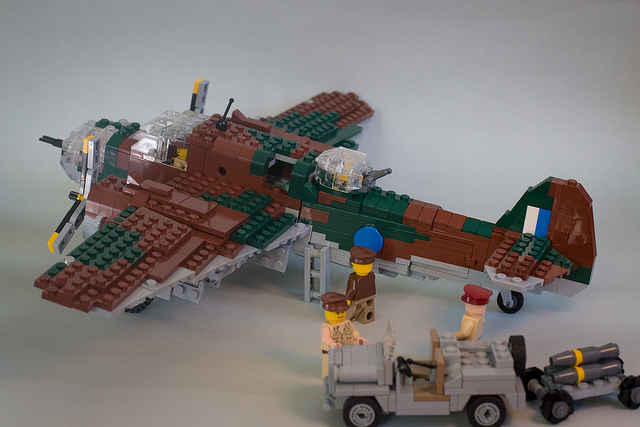Robots on your wing: RAAF and the unmanned future
Posted By
Malcolm Davis
on June 6, 2016 @ 12:30

In an earlier article, I considered Australia’s potential options to replace the RAAF’s 24 F/A-18F Super Hornets in the late 2020s as mandated in the 2016 Defence White Paper (4.42). Options could include manned aircraft, or alternatively ‘…a yet to be developed unmanned combat aerial vehicle’ (also known as ‘UCAS’ for unmanned combat air system). The UCAS option is perhaps the most interesting, and potentially revolutionary, choice. It opens up the opportunity for the ADF to review its future force structure in coming years and to revise the traditional paradigm that the RAAF’s strike and air combat force must include four squadrons comprising 100 aircraft. Going down the UCAS path may be a way to expand the size of that force considerably, though in a manner that would see a future strike and air combat force that’s radically different to that which exists at present.
However, there’s a capability dilemma which must first be addressed. To be effective, particularly in higher end conflicts, one approach may be to design UCAS to be comparable to their manned counterparts in terms of manoeuvrability, speed, range and endurance and payload. Yet to achieve performance goals across all those parameters, the inevitable result will drive up cost and complexity. That leads to an expensive, multirole unmanned aircraft that takes years to acquire, and the added cost and complexity reduces numbers that can be acquired. We’re back to 100 aircraft, short of a significant boost in defence spending.
Certainly the RAAF can preserve such an exquisite high-end capability using a mix of manned and advanced unmanned aircraft. There’s no need to throw the baby out with the bathwater in considering new approaches to airpower. However it’s important to also think about the alternative, which would be a UCAS solution that emphasizes a lower-cost, but lower-capability approach, where each UCAS may not have the performance, payload and sensor capabilities of an F-35, but compensates reduced capability with greater quantity. Quantity has a quality of its own, and the emphasis may be on systems that we can afford to lose in an engagement, but which challenge an opponent through sheer numbers. Given the implications of 3D printing allowing local mass manufacture, the perception of future air operations suddenly changes considerably.
Whichever approach we take UCAS must be largely autonomous in the way they operate, as opposed to being remotely piloted as is the case with current drones such as Predator and Reaper. They won’t replicate the skills and experience of a human pilot and there are legal and ethical aspects to fully autonomous lethal weapons which are yet to be resolved. So they’ll be semi-autonomous, with a UCAS swarm directed by large motherships operating in the rear, or controlled by manned fighters as loyal wingmen. In a recent War on the Rocks analysis, the future of the manned-unmanned team is effectively described below:
‘A future fighter aircraft with advanced communications will control semi-autonomous UCAV systems from dozens or hundreds of miles behind the line of battle, well outside the range of most enemy missiles and radars. From this vantage point, the fighter commander will guide drones in a myriad of tasks, locating enemy fighters with advanced radar and infrared sensors, engaging them with UCAV-carried missiles, and blinding the enemy through electronic jamming and attack. While opponents are tied up dogfighting drones, future fighter commanders will seize advantageous positions or engage distracted enemy aircraft with their own missiles.’
The high-end UCAS, with Northrop Grumman’s X-47B as indicative of that type of capability, would offer superior endurance to manned aircraft, opening up the benefit of persistence over a battlespace, including potentially at long-range from a host base. As such, the high-end unmanned platform is a strategic capability, reminiscent of the range and reach of the F-111. But it may be expensive to acquire in comparison to a low end solution, which by contrast is tactical and could transform how air operations are waged in coming decades across a broad range of missions and roles.
More importantly, the low-end points to the end-point for UCAS development. That’s large numbers of small, agile networked and low-cost UCAS operating together as a ‘swarm’ akin to flocks of starlings, in the place of a few predominantly independent manned or unmanned platforms. Networked swarms of UCAS could overwhelm adversary air capabilities and engage with directed energy weapons or miniaturised air-to-air missiles—and in this contest, numbers matter.
It’s important to emphasize that the best solution is probably a mix of manned and unmanned systems, including a mix of high-end and low-end UCAS. If we don’t consider swarming as one approach, what happens if our adversaries do? In that instance, our more traditional approach to air warfare may be found wanting. The future of air war may be our swarm versus their swarm. Is the RAAF ready for such a radical change?
Malcolm Davis is a senior analyst at ASPI.
Article printed from The Strategist: https://www.aspistrategist.org.au
URL to article: https://www.aspistrategist.org.au/robots-wing-raaf-unmanned-future/
[1] article: http://www.aspistrategist.org.au/air-power-2020-raptor-redux/
[2] Defence White Paper: http://www.defence.gov.au/WhitePaper/
[3] motherships: http://csbaonline.org/publications/2015/12/a-vision-of-future-aerial-combat/
[4] War on the Rocks: http://warontherocks.com/2016/05/drones-and-the-future-of-aerial-combined-arms/
[5] X-47B: http://www.northropgrumman.com/Capabilities/X47BUCAS/Pages/default.aspx
[6] endurance: http://www.cnas.org/sites/default/files/CNAS_ValueofEndurance_final.pdf
[7] swarm’: http://warontherocks.com/2016/02/imagine-the-starling-peak-fighter-the-swarm-and-the-future-of-air-combat/
[8] miniaturised: https://www.flightglobal.com/news/articles/lockheed-reveals-small-self-defence-weapon-for-fight-409219/
 Print This Post
Print This Post